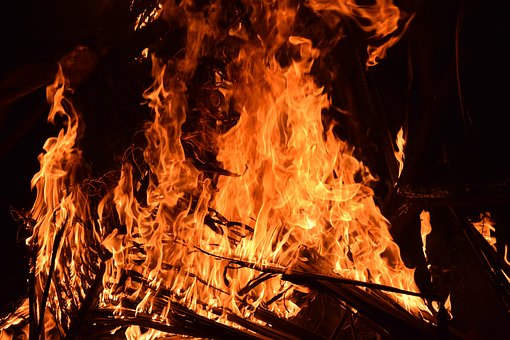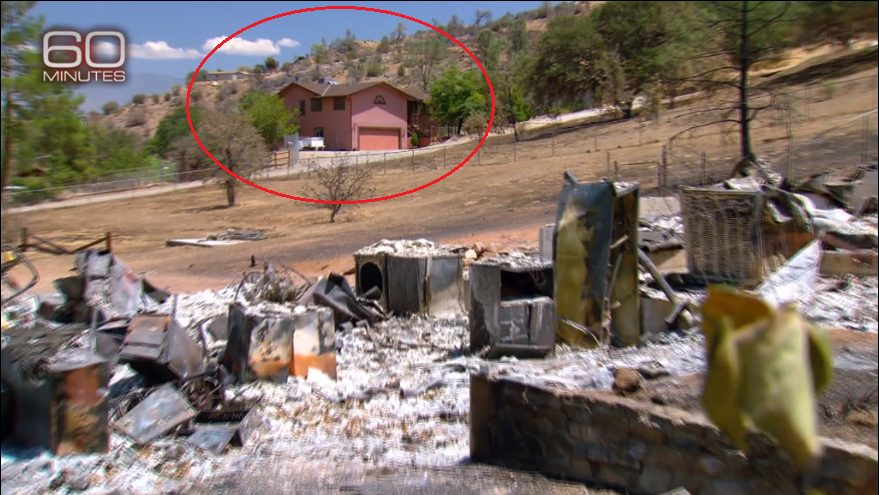November Fires: Butte County Evacuation Alerts Reached 60%
Here's a news story from Dec. 13th this reader only discovered in the paper edition. The SF Chronicle home page is lovely, but it's difficult to discern which stories are from today's paper, yesterday's paper, or last month's paper.
In the paper edition AND the e-edition, however, the reader can flip through that day's edition and scan headlines of every story in every section.
The story titled "911 call logs reveal terrifying moments at onset of Camp Fire" covers both which residents received evacuation calls from regional authorities, and which residents placed calls.
Particularly heart-breaking is the story of one 11-year-old who called 9-1-1 and remains unaccounted for.
"Hundreds of calls rolled in throughout the day" the story says. "In Magalia, an 11-year-old child had stayed home from school, and her parents couldn’t get home to get her out."
Evacuation call procedures, and their failures, have been covered by other news outlets.
A blog post here titled "CalFIRE's Reverse 9-1-1 Failure" (it was not CalFIRE's fault) excerpted parts of a lengthy KQED report. The excerpt revealed in a 2017 wildfire, a CalFIRE employee requested operators in the area to send out a reverse 9-1-1 evacuation alert. The operator did not know what "Reverse 9-1-1" meant, and records show three hours passed before text messages were sent out. Forty-four people died in that fire.
A reverse 9-1-1 is a means of sending calls instead of receiving them from 9-1-1 operator centers. As the blog post highlights, each of the 58 counties in California then had a different name for "Reverse 9-1-1." The counties' name disparities have since been ironed out, subsequent news reports said.
In this story out two days ago from the San Francisco Chronicle, the reporter says attempts to send out evacuation alerts during November's Butte County wildfires, only reached 60% of the people who signed up to receive those calls.
"Analog networks have been replaced with digital networks, which rely on regional electricity." <<==== This needs to be investigated.
People over 40 may remember that analog phones in the home still worked when neighborhood-wide electricity blackouts rolled through. It seems the underlying analog phone network architecture also worked without power. Do the digital phone networks need backup power supplies installed?
If more people were able to get to the newspaper, they may have held a town meeting up in Butte County and demanded Amber-alert style evacuation calls be made in case of rapid wildfire. But digital subscribers trying to read the newspaper can't get to the e-edition of the San Francisco Chronicle lately on any browser.

This work by AJ Fish is licensed under a Creative Commons Attribution-NonCommercial 4.0 International License.
In the paper edition AND the e-edition, however, the reader can flip through that day's edition and scan headlines of every story in every section.
The story titled "911 call logs reveal terrifying moments at onset of Camp Fire" covers both which residents received evacuation calls from regional authorities, and which residents placed calls.
Particularly heart-breaking is the story of one 11-year-old who called 9-1-1 and remains unaccounted for.
"Hundreds of calls rolled in throughout the day" the story says. "In Magalia, an 11-year-old child had stayed home from school, and her parents couldn’t get home to get her out."
Evacuation call procedures, and their failures, have been covered by other news outlets.
A blog post here titled "CalFIRE's Reverse 9-1-1 Failure" (it was not CalFIRE's fault) excerpted parts of a lengthy KQED report. The excerpt revealed in a 2017 wildfire, a CalFIRE employee requested operators in the area to send out a reverse 9-1-1 evacuation alert. The operator did not know what "Reverse 9-1-1" meant, and records show three hours passed before text messages were sent out. Forty-four people died in that fire.
A reverse 9-1-1 is a means of sending calls instead of receiving them from 9-1-1 operator centers. As the blog post highlights, each of the 58 counties in California then had a different name for "Reverse 9-1-1." The counties' name disparities have since been ironed out, subsequent news reports said.
In this story out two days ago from the San Francisco Chronicle, the reporter says attempts to send out evacuation alerts during November's Butte County wildfires, only reached 60% of the people who signed up to receive those calls.
Throughout the day the Sheriff’s Office rolled out various evacuation orders and warnings, issued on an opt-in system called CodeRed. But records reviewed by The Chronicle show the alerts’ results were mixed.What the story doesn't mention is that landlines with a backup battery may not receive calls when the PG&E power company shuts off the power. Why? Because the underlying architecture of phone networks in the last decade have been replaced. Analog networks have been replaced with digital networks, which rely on regional electricity.
Of the calls made to landlines and opt-in mobile numbers, only about 60 percent (15,000 of 25,000) were delivered, either live or to an answering machine. The rest were met with busy signals, operator intercepts or the call timed out.
The county declined to issue an Amber Alert-style message, which would have reached all cell phones in the area, rather than just the numbers that had signed up.
"Analog networks have been replaced with digital networks, which rely on regional electricity." <<==== This needs to be investigated.
People over 40 may remember that analog phones in the home still worked when neighborhood-wide electricity blackouts rolled through. It seems the underlying analog phone network architecture also worked without power. Do the digital phone networks need backup power supplies installed?
If more people were able to get to the newspaper, they may have held a town meeting up in Butte County and demanded Amber-alert style evacuation calls be made in case of rapid wildfire. But digital subscribers trying to read the newspaper can't get to the e-edition of the San Francisco Chronicle lately on any browser.

This work by AJ Fish is licensed under a Creative Commons Attribution-NonCommercial 4.0 International License.



